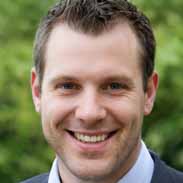Mastering biology chapter 6,7,11 – Flashcards
Unlock all answers in this set
Unlock answersquestion
What is diffusion?
answer
Diffusion is the movement of particles down their concentration gradient.
question
What name is given to the process by which water crosses a selectively permeable membrane?
answer
osmosis. Osmosis is the passive transport of water.
question
Describe a cell in hypertonic solution.
answer
There is a greater concentration of solute outside the cell.
question
Describe a cell in hypotonic solution.
answer
A cell will swell and gain water when placed in a hypotonic solution.
question
Describe a plant cell in hypotonic solution.
answer
In a hypotonic solution plant cells experience a net gain of water and become turgid.
question
What happens to a cell in hypertonic solution?
answer
A cell will lose water when placed in a hypertonic solution.
question
(1) How you would need to modify the outside solution in the left-side drawing to make it hypotonic relative to the solution inside the liposome and (2) How you would need to modify the outside solution in the center drawing to make it hypertonic relative to the solution inside the liposome?
answer
Cell 1 Outside solution hypertonic to inside. Net flow of water out of cell; cell shrinks. Cell 2 - Outside solution hypotonic to inside. Net flow of water into cell; cell swells or even bursts. - (1) Reduce the solute concentration outside the liposome; (2) Increase the solute concentration outside the liposome.
question
The eukaryotic cell overcomes the problem of its larger size by _____.
answer
compartmentalizing cellular functions into various organelles
question
Which of the following eukaryotic organelles are found only in algal and plant cells?
answer
chloroplasts
question
Mitosis is responsible for what key process in multicellular eukaryotes?
answer
growth, wound repair, reproduction
question
During what phase of the cell cycle does the DNA become replicated?
answer
S
question
Which statement is correct concerning the relationship between chromosomes and genes, chromatin, or sister chromatids?
answer
Each replicated chromosome consists of two sister chromatids. Replication of a chromosome's single DNA double helix produces two identical DNA copies called sister chromatids.
question
Which answer correctly identifies a cell-cycle checkpoint with a criterion for passing it?
answer
G2 checkpoint: Chromosomes have replicated successfully.G2 occurs after S and before M phase, so it is advantageous for the cell to have a checkpoint assessing chromosome replication here.
question
Which of these is NOT a carcinogen?: UV light, cigarette smoke, fat, testosterone
answer
All of these substances can cause cancer.
question
_____ is a carcinogen that promotes colon cancer.
answer
fat. A diet high in fat increases the risk of both colon and breast cancer.
question
What is the consequence of missing or defective Rb proteins for cell-cycle regulation?
answer
E2F is active in the absence of G1 cyclin, resulting in failure of the G1 checkpoint. Normal Rb binds to E2F and keeps it inactive until phosphorylation of Rb by the G1cyclin-Cdk complex releases E2F. If Rb is missing or defective, any E2F that is present will push the cell through the G1 checkpoint regardless of G1 cyclin levels.
question
In terms of the relationship between the failure of social controls and cancer, which answer best explains why many cancerous cells have defective forms of the Ras protein?
answer
Ras is part of the signal transduction pathway that triggers G1 cyclin production; many cancer cells have defective forms of Ras that do not become inactivated. Ras is normally activated in response to growth factors and deactivated in their absence. If Ras cannot become deactivated, it constantly sends signals that trigger cell division, contributing to cancer.
question
What two types of defects does a cancerous cell possess?
answer
Cancerous cells possess defects that make proteins required for cell growth active and tumor suppressor genes inactive.
question
The defining characteristic of a malignant tumor is that _____.
answer
its cells can spread to other parts of the body
question
When cells were first taken from Henrietta Lacks, she was _____.
answer
suffering from cervical cancer
question
How did doctors harvest and culture cells from Henrietta Lacks?
answer
Cells were taken while she was being treated for cancer many years ago, and these cells have been cultured in the lab ever since.
question
Did doctors ask Henrietta Lacks' permission to take her cells, and was she paid for them?
answer
She was never told that her cells were being taken, and neither she nor her family has been compensated.
question
What property of Henrietta Lacks' cells was most unusual when they were grown in the laboratory?
answer
They continue to divide and multiply after decades of culture.
question
Cells taken from Henrietta Lacks have been used for experiments leading to _____.
answer
new treatments for cancer,tests of the effects of atomic radiation on life, the development of a polio vaccine
question
During telophase, the nonkinetochore microtubules _______. disassemble, shorten, or lengthen
answer
disassemble



